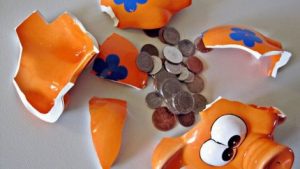Web page design can make or break a website, but that’s a problem website owners can quickly fix without breaking the bank. Fortunately, some of the tweaks required to turn a bad web page design into an irresistible web page design can be done within minutes and for free.
Of course, a web page design that is poorly coded, incorporates spam search engine optimization techniques, or includes terrible content won’t have a chance of achieving long-term, significant improvement. However, if you publish useful content and avoid search engine optimization tactics that could get you in trouble with search engines like Google, you can improve your website traffic and conversion rates by first improving your web page design.
Following are the ten key elements of web page design that your website needs in order to attract and retain visitors. If your website doesn’t include the ten elements listed below, then you need to add them as soon as possible to enable your site to reach its full growth potential.
1. Useful and Credible Content
If your content isn’t useful to your audience, then no one will want to read it or share it with their own audiences. That’s the kiss of death for a website, and it’s easy to fix. The content on your website must be useful, but it also needs to be credible. Building credibility so visitors to your website feel like they can trust the information on your site is essential. Therefore, the content within your web page design, which might include text, images, tools, and so on, must be credible, too. As you design your web pages, make sure that every element within the design supports your efforts to provide useful and credible content.
2. Intuitive Navigation
Is it easy to find important information and interesting content on your website? If navigating around your website is cumbersome, then you need to modify your site’s navigation immediately. Make sure your top navigation bar is intuitive, and include useful links to popular content in your sidebars. Also, be sure to include links that meet visitors’ expectations. For example, include the search box in the upper-right corner and links to contact you and learn more about you in the top navigation bar and in the footer. Add a sitemap to make it even easier for visitors to find deep content from your site’s archives.
3. Usability
If your website doesn’t load in visitors’ web browsers quickly, they’ll click away before they have a chance to view your content. Make sure your site loads quickly on desktops and mobile devices by using a great web host, reducing image sizes, and avoiding content features like third-party ads that can slow down page load time. You should also avoid cluttering your site with ads or pop-up windows that damage the user experience by blocking instant access to your content.
4. Shareability
Is every page of your website and every piece of content published on your site easily shareable? Can visitors click a button and instantly share your content with their social media followers on Twitter, Facebook Google+, LinkedIn, and Pinterest? Can they easily email your content to their own audiences? Not only should you make sure that social sharing buttons are easy to find and use, but you also need to make sure that you create useful content that people will want to share, as you learned in #1 above. Furthermore, include social media icons in a highly visible location on your website that invite visitors to connect with you on your various social media profiles. In other words, surround people with ways to quickly and easily connect with you and consume your content.
5. Appropriate Links
Avoid linking to sites that could hurt your own site’s credibility, and never sell text links on your site. Make sure your web page design includes far more useful content than links. In other words, make sure Google and other search engines have relevant text to crawl on your pages, so they can be ranked appropriately.
6. Acceptable Search Engine Optimization
Don’t commit any search engine optimization (SEO) mistakes that could get your site banned from Google search results or reduce your site’s Google search results rankings. For example, never include hidden text filled with keywords on your web pages, and don’t stuff keywords into your web pages either within the content or as a separate list in the sidebar, footer, or elsewhere on any page. Both are guaranteed ways to get your web pages flagged as spam by Google.
7. Accessible Contact Information
Don’t hide your contact information on your site. Instead, access to your contact information and an email form should be quick and easy from any page of your website. The more you can do to make your site seem human, the better, so offer multiple ways to contact you on your site’s contact page.
8. Credibility
Credibility starts with great web page design. If your website looks homemade, cheap, and spammy, then no one will return to it or share it with their own audiences — even if your content is good. Therefore, review your web page design and make sure it looks professional at all times.
9. Appealing and Relevant Imagery
The images used in your web page design are critical to making it irresistible. Use colorful images that are crisp and clean but also relevant to your site’s topic and your audience’s expectations for your site. Furthermore, make sure the images you use on your site add to the text and messaging rather than overshadowing or detracting from the useful content. Finally, be sure to use images that you are legally allowed to publish on your website.
10. Legal Information
As mentioned in #9, make sure the images and content you include in your web page design are ones that you can legally use, and always cite your sources. Never publish copied content, and include links in your page design for visitors to read your privacy policy and terms and conditions of use policy. Taking these steps will help you make sure you’re protected from potential legal problems in the future.




